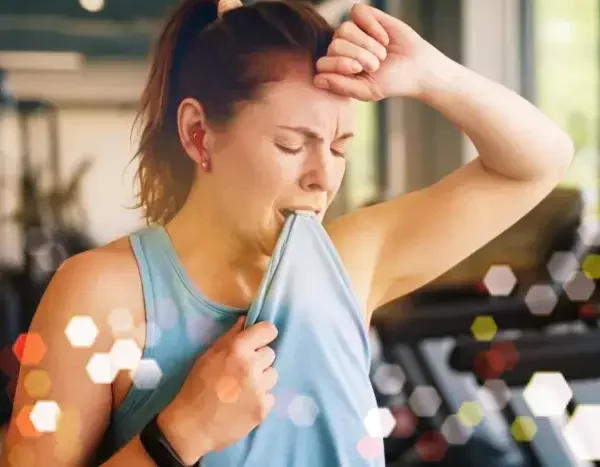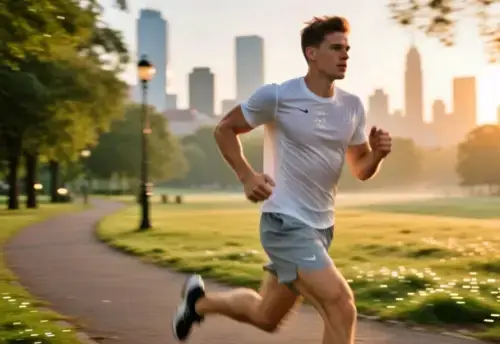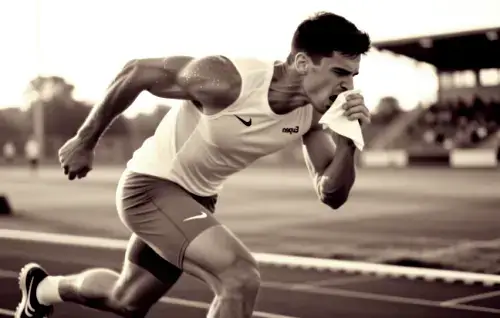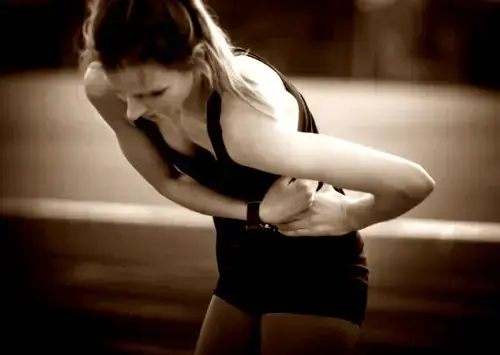Nuances sports. We all know the gospel of physical fitness: exercise strengthens the heart, builds powerful muscles, and melts away the stresses of modern life, leaving us with a mood-boosting endorphin glow.
It’s the universal prescription for a healthier, happier existence. But beneath this glossy surface of well documented benefits lies a world of bizarre, unexpected, and sometimes alarming physiological quirks.
What if your intense workout left you with a metallic taste in your mouth, a mysterious rash, or even a spontaneous feeling of sexual pleasure?
These aren’t symptoms of a rare disease but rather fascinating, and often normal, reactions of the human body pushed to its limits. They are reminders of the intricate and complex biological machinery at play every time we run, lift, or stretch.
While the journey to fitness is overwhelmingly positive, these strange phenomena reveal just how profoundly a simple workout can impact our system, from our blood vessels to our nerve endings. Let’s pull back the curtain on the peculiar world of exercise side effects.
Nuances Sports, the Coppery Taste of Effort.
Metallic Mouth.
Imagine you’re in the final stretch of an intense run or a high-intensity interval training (HIIT) session. Your lungs are burning, your heart is pounding, and then, a distinct, coppery tang floods your mouth, as if you’ve licked a battery.
This unsettling phenomenon, a metallic taste during or after strenuous exercise, is surprisingly common and has a simple, albeit slightly dramatic, explanation. The culprit is your own blood. During intense cardiovascular activity, the pressure within your body skyrockets.
This can cause the incredibly delicate and tiny blood vessels (capillaries), particularly those in your lungs and nasal passages, to rupture.
While this sounds alarming, it’s usually on a microscopic level. Tiny droplets of blood are released into your airways. When you exhale, these droplets travel up into your mouth. The iron-rich protein in your red blood cells, hemoglobin, is what your taste buds register as a distinct metallic flavor.
This effect is most frequently reported by long-distance runners, cyclists, and swimmers athletes who push their respiratory systems to the absolute maximum for extended periods.
In many cases, the bleeding is so minimal that it’s not visible; the blood may simply trickle down the back of the throat. While generally harmless, if this taste becomes a regular occurrence or is accompanied by coughing up blood, it’s wise to dial back the intensity and consult a physician to rule out any underlying vascular issues.
When Your Body Weeps.
Unexpected Bleeding.
Beyond the microscopic leaks in your lungs, exercise can sometimes trigger more visible and startling instances of bleeding from unexpected places.
Seasoned athletes and weekend warriors alike have reported bleeding from the anus, nipples, and nose, turning a triumphant workout into a moment of concern.
Gastrointestinal Bleeding.
During prolonged, strenuous exercise like a marathon, your body enters a state of crisis management. It prioritizes survival by shunting oxygen-rich blood away from “non-essential” systems, like the digestive tract, and redirecting it to the hard-working muscles, heart, and lungs.
This temporary lack of oxygen to the intestines is known as ischemia. Once you stop exercising, blood flow rushes back to the deprived organs.
This sudden reperfusion can damage the delicate lining of the intestinal walls and cause minor bleeding, which is why some marathon runners may experience bloody stools or rectal bleeding after a race.
Runner’s Nipple.
Perhaps one of the most infamous and wince-inducing side effects is “runner’s nipple.” This painful condition is a simple matter of friction. As you run, your shirt, dampened with sweat (which contains salt and acts as an abrasive), continuously rubs against the sensitive skin of the nipples.
Over thousands of repetitions, this friction can lead to chafing, cracking, and bleeding. Research suggests that up to 40% of athletes running more than 40 miles (about 65 km) per week have experienced this.
The problem is often exacerbated in cold weather when nipples become more erect and sensitive.
Thankfully, the solution is simple: applying petroleum jelly or using specialized nipple guards or sports plasters can create a protective barrier and prevent the dreaded chafing.
The Agonizing Side Stitch.
A Medical Mystery.
It strikes without warning: a sharp, stabbing pain in your side so intense that it forces you to stop, clutch your abdomen, and gasp for air.
Known colloquially as a “side stitch,” this phenomenon has a formal medical name: exercise-related transient abdominal pain (ETAP). What’s most fascinating about ETAP is that despite its prevalence, scientists still aren’t entirely sure what causes it.
Several leading theories exist. One popular explanation points to irritation of the parietal peritoneum, a thin membrane that lines the abdominal cavity and helps support your internal organs.
When you exercise, especially in high-impact activities like running, the jolting motion can cause friction between the two layers of this membrane, leading to pain.
This theory is supported by the fact that stitches are less common in low-impact sports like swimming or cycling. Another theory suggests the pain originates from the ligaments that connect the diaphragm (the primary muscle for breathing) to the organs below.
The rapid, heavy breathing during exercise, combined with the jostling of organs, could be putting stress on these ligaments.
Have a Great Day!





